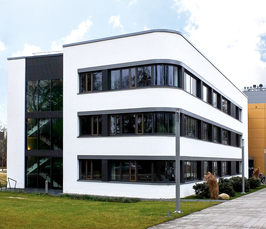Bright and Dark Excitons in 2D Semiconductors and Heterostructures
- PC Department Online Seminar
- Date: Nov 9, 2020
- Time: 11:00 AM (Local Time Germany)
- Speaker: Alexander Högele
- Fakultät für Physik, Munich Quantum Center, and Center for NanoScience (CeNS), Ludwig-Maximilians-Universität, München

We use optical spectroscopy at cryogenic temperatures and in the presence of external magnetic fields to study characteristic signatures of various spin-valley polarized exciton species in TMD monolayers [1,2], homobilayers [2,3] and heterostructures [4,5], and identify their role in the elementary optical responses in absorption and emission.
[1] J. Lindlau
et al., Identifying optical signatures of momentum-dark excitons in transition
metal dichalcogenide monolayers, arXiv:1710.00988 (2017).
[2] J. Förste et
al., Exciton g-factors in monolayer and bilayer WSe2 from experiment and
theory, Nat. Commun. 11, 4539 (2020).
[3] J. Lindlau
et al., The role of momentum-dark excitons in the elementary optical response
of bilayer WSe2, Nat. Commun. 9, 2586 (2018).
[4] M. Förg et
al., Cavity-control of interlayer excitons in van der Waals heterostructures, Nat.
Commun. 10, 3697 (2019).
[5] M. Förg et
al., Moiré excitons in MoSe2-WSe2 heterobilayers and heterotrilayers, arXiv:2006.09105
(2020).
Join Zoom Meeting
https://zoom.us/j/92979300722?pwd=dmtuK1g5TnkzdG9nZ0owclZyOW1rUT09
Meeting ID: 929 7930 0722
Passcode: 173846